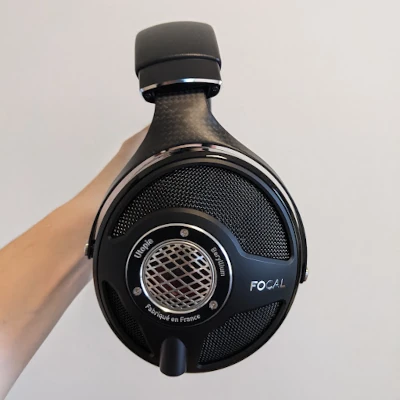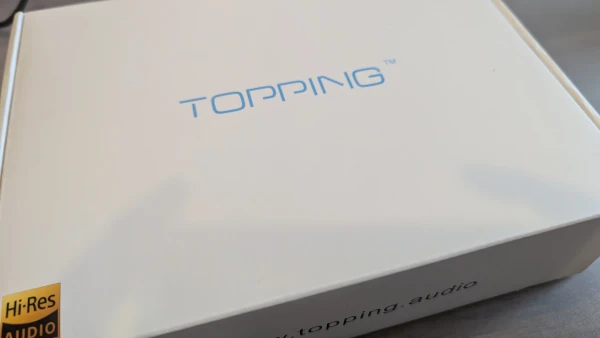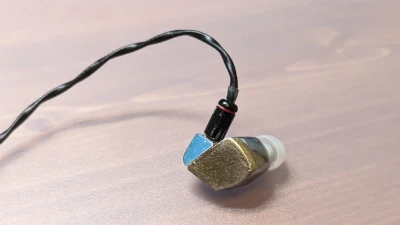[Review] I bought the Sony WH-1000XM6

Table of Contents
Overview
I purchased the Sony WH-1000XM6, released on May 30, 2025, from the Sony Store. The price was 59,950 yen. This article will review the unit.
About the WH-1000X Series
The WH-1000X series celebrates its ninth anniversary in May 2025, having first launched with the original WH-1000X in 2016. Sony released the world’s first consumer noise-canceling headphones in 1992, and the WH-1000X series is positioned as their top-tier offering. Around 2016, when the first model appeared, 3.5mm earphone jacks were still common on Android devices, and listening to music with wired headphones on digital audio players like Walkmans was still mainstream. As smartphones shed their 3.5mm headphone jacks and wireless technology advanced, listening to music with wireless earphones and headphones, and even making calls using their built-in microphones, became commonplace. The WH-1000X series existed as the highest-grade headphones available to consumers long before noise-canceling headphones became an everyday item. They widely support audio activities such as music listening, phone calls, and conferences. This review will cover the new WH-1000XM6, which was announced and released three years after the WH-1000XM5, which came out in 2022.
What’s New with the WH-1000XM6
The WH-1000XM6 introduces three main new features:
- Tuning by four world-renowned sound engineers.
- A 7-year upgrade to the QN3 noise-canceling processor.
- The addition of 360 Upmix for Cinema mode for immersive sound field conversion.
Other minor changes include the return of the foldable mechanism. While these may seem like minor updates individually, I believe the overall completeness of the product is surprisingly satisfying when experiencing the actual unit. More details will be provided in the review below.
Unboxing

My first impression was that the package was smaller than I expected. I own and use Bose Noise Cancelling Headphones 700 (NC700), and I was a bit surprised that the WH-1000XM6 package felt smaller than the NC700’s.
Upon opening the package, you’ll find the carrying case inside. The magnetic closure makes it easy to access right away, which is a nice touch.

The headphones are stored folded inside the case. This means you have to fold them and shorten the headband to store them, which might be a bit of a hassle. However, the ability to fold headphones that appear larger than the NC700 into such a compact size for portability is incredibly convenient.

When comparing the folded WH-1000XM6 with the NC700, you can see how compactly it folds.

The right side of the headphone body has a USB-C charging port. The left side has the power (+ pairing button), the noise-canceling toggle button, and a 3.5mm headphone jack. Included accessories include a headphone cable with 3.5mm 3-pole plugs on both ends for wired use. I don’t believe it supports balanced connections, so it’s probably best to use it wirelessly. With noise canceling enabled, it can operate continuously for 30 hours, so I don’t anticipate much (or any) need for wired use.
Review
As noise-canceling headphones, their performance is high and very practical. As a general consumer, I wasn’t familiar with the sound engineers involved, but the sound balance is excellent, offering a neutral and capable sound profile. The noise-canceling performance is also clearly superior to the NC700. Considering the NC700’s price was around 40,000 yen, I feel 60,000 yen is a reasonable price in relative terms (I had anticipated it might exceed 60,000 yen, so I imagine they worked hard to keep the price down). Let’s examine the details. This review is based on about 20 hours of use.
Bass
The bass delivers solid deep lows, but the quantity is neither excessive nor lacking, and it doesn’t sound muddy or flat. It produces a moderate sound, but my personal feeling is that it has a slightly solid (firmer) texture, suggesting an emphasis on quick sound transients and overall balance. With the Bose NC700, I found the bass to be muddy and lacking in resolution, making it uninteresting to listen to, so in that regard, I’m satisfied with the sound quality here. However, it’s not a bass-specialized model like Sony’s own SONY ULT WEAR WH-ULT900N, so even though you can adjust the quantity with an equalizer, you might want to check if the bass texture suits your preference.
Midrange
The midrange is also neutral and easy to listen to, with neither warmth nor coolness. Both female and male vocals are neutrally easy to hear, with an appropriate amount of luster, yet they sound flat. Unlike the bass, I don’t detect any particular harshness or softness in the midrange with my ears; it’s a neutral sound. I don’t feel any blandness or lack of allure at all, but it also doesn’t have a groove or luster specifically tailored to male or female vocals, so it neutrally reflects the artist’s expression. Even jazz feels somewhat lacking in groove and unique atmosphere, giving a sense of just listening to music. If you primarily listen to music and have a strong preference for certain genres, you might find it uninteresting, but if you listen to a wide variety of music or use it for meetings, English study, or Audible, this neutrality means it’s suitable for various purposes without dissatisfaction. However, even with its neutrality, it still has character due to its well-balanced tuning, and I believe the influence of the four sound engineers is evident here.
Treble
The treble doesn’t feel harsh or limited in range. You can feel a certain amount of sound lingering, and it’s not a fatiguing treble to listen to. However, being a closed-back model with a resin housing, there’s no particular sense of openness in the sound, so you won’t feel the exhilaration of a drum kit or the rhythmic quality of high notes in metal music, nor will specific SE sounds or sparkling effects from Vocaloid songs or anime songs stand out. It doesn’t have the openness of open-back headphones or the unique characteristics of closed-back headphones with wood or metal housings, so like the midrange, it doesn’t have characteristics specialized for particular genres. It has sufficient openness and delicacy, so it doesn’t sound muffled.
Resolution
The overall sound balance is excellent, and the resolution is consistent. The sound is clear and transparent throughout, with good separation, yet it comes together coherently as music. There’s no lack of balance, such as certain frequencies sounding muddy, making it a very user-friendly performer. Unless you’re an audio enthusiast, you’ll likely be impressed by its sound quality. Compared to the NC700, I don’t feel any muddiness or cloudiness, which was a pleasant surprise even compared to higher-end audio.
Noise Canceling
The noise canceling is significantly superior to the NC700. In the summer, you’d likely use fans or air conditioners. When you open a window, you hear wind, the sound of car tires, various subtle noises from crowds, and the hum of air purifiers. These minor ambient sounds are effectively cut out. While human voices and louder sounds are still somewhat audible, almost like your ears are plugged, once music is playing, you can barely tell if such sounds are occurring outside. This makes it easier to concentrate on studying, listening to music, or meetings. At the very least, the experience of using the noise-canceling performance and features is superior to the NC700. That said, it doesn’t block out everything, and it would be dangerous if it did. It’s best to try out the noise canceling and sound experience with the actual unit to get a feel for its balance and how sounds are heard.
Comfort
Thanks to the folding mechanism, the headphones fit snugly on my head and ears, and I appreciate the benefits of the folding mechanism beyond just making them compact. However, perhaps because I’ve just started using them, I feel a strong side pressure, and after prolonged wear, I feel some pressure and slight fatigue behind and below my ears. I don’t think weight is an issue, so I’m probably not used to the side pressure yet. I don’t find the fit to be bad, but for long-term use, the pressure from the side clamps can hinder concentration. The pads themselves are deep enough so that my ears don’t touch the headphones and cause pain. The pads are also soft and sufficiently seal around my ears to fit well and allow the noise canceling to function, so only the side pressure is a concern.
Overall Impression
In the noise-canceling genre, the headphones boast high completeness, and I’m satisfied with both the sound quality and noise-canceling performance. The ability to filter out noise and deliver clear, high-quality audio will significantly enhance the satisfaction of various audio-related activities. From a music appreciation perspective, while the sound doesn’t have a strong individual character due to the collaboration with sound engineers, it is very well-balanced. Wireless headphones transmit audio wirelessly to the headphones, which then output sound through a DAC, amplifier, and drivers. This setup makes it easier to reproduce the sound intended by the engineers. Although battery consumption is a concern, the system’s completeness in terms of sound quality is high. The WH-1000XM benefits from the collaboration with sound engineers, meaning that even if it doesn’t specialize in a particular genre, there’s great value in getting excellent, balanced sound along with noise-canceling functionality without overthinking it. It would be difficult to achieve overall sound harmony and correction across the entire system without the expertise of Sony and world-renowned sound engineers. Therefore, I believe this model is highly commendable for offering a complete headphone experience and ensuring basic performance, including resolution, within a 60,000 yen price point.
However, 60,000 yen is expensive, and the previous model, the WH-1000XM5, can be purchased for 40,000 yen, which is 20,000 yen cheaper than the WH-1000XM6. If this level of completeness isn’t necessary, the WH-1000XM5 remains a perfectly viable option.
While some of the changes in the WH-1000XM6 are minor, and I wasn’t initially captivated by the emphasis on the collaboration with four sound engineers, experiencing the overall system’s convenience and refinement in practice has made me truly feel that the headphones as a whole have been significantly upgraded.
Summary
From a music appreciation standpoint, the WH-1000XM6 doesn’t offer a specific sound expression tailored to particular genres, but it possesses a deep versatility that can handle various audio sources and purposes without issue. Furthermore, its noise-canceling performance is clearly superior to the Bose NC700, and I consider it the best buy among top-tier models at the time of its release. While some music enthusiasts might find the sound lacking in excitement or character, the system created by these noise-canceling headphones boasts high completeness, and the initial price tag of around 60,000 yen feels justified. If you’re in need of high-end noise-canceling headphones, I highly recommend considering the WH-1000XM6 as one of your top choices.







Loading comments...